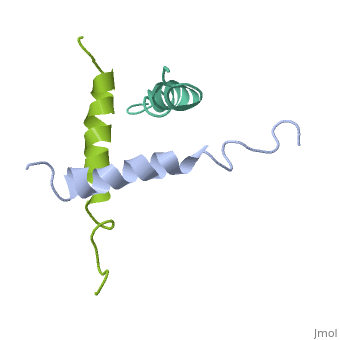Glucagon
FunctionGlucagon (GLC) is a hormone which raises blood glucose level. GLC causes the liver to convert glycogen to glucose. GLC effect is opposite to that of insulin[1]. See some details in User:Mary Ball/Glucagon. RelevanceGlucagon is injected in cases of severe glycemia[2]. Overdose of β blockers is treated with GLCas well as cases of Epinephrin-resistant low blood pressure. Pancreatic tumors may cause high levels of GLC. |
| ||||||||||
3D Structures of glucagon3D Structures of glucagon
Updated on 24-May-2017
2g49 – hGLC preprotein residues 53-81+ insulin-degrading enzyme – human
1kx6, 2m5p, 2m5q – hGLC - NMR
1nau – hGLC (mutant) – NMR
1bh0 - hGLC (mutant)
1gcn - hGLC
ReferencesReferences
- ↑ Ramnanan CJ, Edgerton DS, Kraft G, Cherrington AD. Physiologic action of glucagon on liver glucose metabolism. Diabetes Obes Metab. 2011 Oct;13 Suppl 1:118-25. doi:, 10.1111/j.1463-1326.2011.01454.x. PMID:21824265 doi:http://dx.doi.org/10.1111/j.1463-1326.2011.01454.x
- ↑ Heptulla RA, Rodriguez LM, Bomgaars L, Haymond MW. The role of amylin and glucagon in the dampening of glycemic excursions in children with type 1 diabetes. Diabetes. 2005 Apr;54(4):1100-7. PMID:15793249
